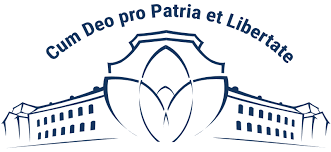ANALYSIS OF CURRENT MIGRATION PROCESSES IN EU COUNTRIES
DOI:
https://doi.org/10.32782/2786-5843/2025-3-2Keywords:
geography of migrations, migration processes, emigration, immigration, EUAbstract
Relevance of the study: the study of migration processes in the EU countries is relevant, since these processes significantly affect economic development, social integration and cultural diversity of the region. Growing population mobility requires states to adapt policies related to labor migration, refugees and immigrant integration. The analysis of migration trends also allows us to better understand the challenges faced by EU countries and develop effective strategies to overcome them. The subject of the study is migration processes in EU countries in the modern period.Purpose of the study: to study modern migration processes in EU countries, to identify the main trends of modern migration processes in the region, to group EU countries according to the similarity of migration processes in them.Research methodology: a comprehensive scientific approach that combines quantitative and qualitative methods of analysis, statistical analysis methods are applied.The results of the study: the volume and structure of migration in the countries of the European Union in the modern period were analyzed, the gender and age characteristics of modern immigrants and emigrants were indicated and the possible impact of these characteristics on the labor market of the region were analyzed. The latest trends and trends of modern migration processes in the countries of the region were analyzed. The EU countries were classified by the volume of immigration, in particular, 4 groups of countries were identified, namely: countries with the largest number of immigrants; countries with high immigration rates; countries with average immigration rates and countries with the lowest immigration rates. The volume and geography of forced migration of Ukrainians related to military operations since 2022 were characterized. Practical significance: the results of the study reflect the current features of migration processes in the EU region, they can be used for further research and forecasting certain socio-economic parameters, such as: changes in the demographic situation of the EU as a whole and its individual countries, calculations of the demographic burden on the working-age population in the coming years, the study of individual migration trends (educational migration, digitalization, globalization of the labor market, etc.).Conclusions: modern migration processes in the EU countries were studied, changes in immigration, emigration and balance of migration indicators in the countries of the region were established. Countries were grouped according to the similarity of immigration indicators. The volume and geography of Ukrainian migrants in connection with military operations were characterized, and the impact of this type of migration on overall migration indicators in the EU was reflected. Prospects for further research are related to a detailed study of megatrends that influence modern migration processes in the world, including in the countries of the European Union, such as: globalization processes, the impact of wars and military conflicts, environmental factors, educational prospects, etc. An important place in modern research remains for the study of forced migrations of Ukrainians associated with military operations, in particular the volume of refugee flows to various EU countries, the features of social adaptation of Ukrainian citizens in these countries, their impact on the economy and the labor market, etc.
References
Amelung N., Schee S., van Reekum R. Reinventing the politics of knowledge production in migration studies: introduction to the special issue. Journal of Ethnic and Migration Studies, 50 (9), 2024. Р. 2163–2187. https://doi.org/10.1080/1369183X.2024.2307766.
Scheel Stephan, Tazzioli Martina. Who is a Migrant? Abandoning the Nationstate Point of View in the Study of Migration. Migration Politics. 2022. Vol. 1 issue 1, URL: https://www.scipost.org/10.21468/MigPol.1.1.002?acad_field_slug=astronom
Mikach Robert, Vakhdidin Akhmad Judah. Impact of migration on university education: Comparative analysis between Croatia and Indonesia. Materials of the 2nd International Indonesian Conference on Interdisciplinary Research. 2021. URL: https://www.atlantis-press.com/proceedings/iicis-21/125965490. DOI 10.2991/assehr.k.211206.003
Olumba E. E. From students to refugees: students’ (im)mobility in the wake of the Russian invasion of Ukraine. Journal of Ethnic and Migration Studies, 2025. Р. 1–22. DOI: https://doi.org/10.1080/1369183X.2025.2519424.
Майстренко Ю.І., Мельніченко А.В. Проблема нелегальної міграції у ЄС: спроба вирішення через формування двосторонніх угод. Міжнародні та політичні дослідження. 2024. № (38). С. 64–75. DOI: https://doi.org/10.32782/2707-5206.2024.38.6.
Курилюк Ю., Родінова Н., Овчар П. Проблеми та перспективи міграційної політики ЄС. Економіка та суспільство. 2022. № (46). DOI: https://doi.org/10.32782/2524-0072/2022-46-34.
Димов К.Б. Реформування міграційного законодавства ЄС: міжнародно-правовий аналіз ключових аспектів Нового пакту щодо міграції та притулку. Академічні візії. 2024. № (27). URL: https://academy-vision.org/index.php/av/article/view/985
Вимушена міграція населення у часи повномасштабного вторгнення росії в Україну / С. Батиченко та ін. Вісник Київського національного університету імені Тараса Шевченка. 2022. № 3/4 (84/85). С. 16–19. DOI: 10.17721/1728-2721.2022.84.2.
Джаман В.О., Джаман Я.В. Географія міграцій населення України: наслідки російської агресії. Український географічний журнал. 2024. № 1. C. 40–48
Офіційний сайт Євростату. URL: https://ec.europa.eu/eurostat
Ukraine Refugee Situation. URL: https://data.unhcr.org/en/situations/ukraine







